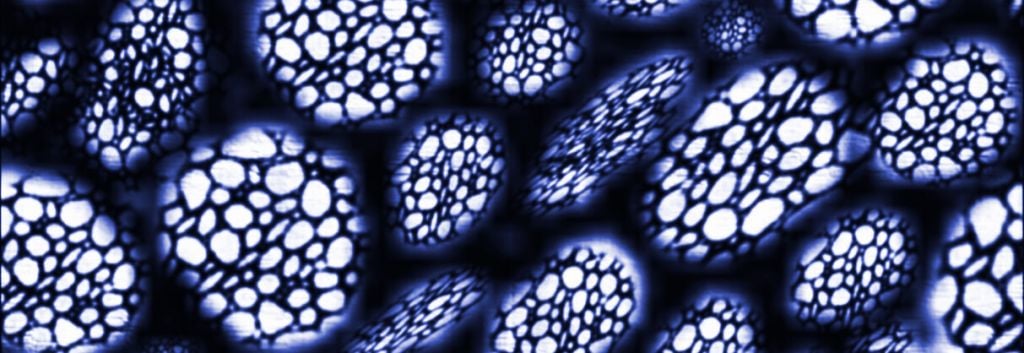Newsletter Signup - Under Article / In Page
"*" indicates required fields
British researchers have developed biomaterials that better recreate the conditions required for stem cells to grow into desired cell types.
Researchers at Imperial College London have used 3D printing to create biological structures that can support tissue regeneration. The study, published in Scientific Reports, outlines how the group used cryogenics – freezing – to create a biomaterial that mimics the mechanical properties of the brain and lungs. This could have a number of exciting applications, including the growth of new neurons to repair damage to the brain and spinal cord.
Regenerative medicine, the use of stem cells to regenerate or repair damaged tissue, is meant to revolutionize the treatment of disease and injury. However, efforts to regenerate the body have not exactly lived up to the hype, and one reason for this is our inability to recreate the correct conditions for stem cells to differentiate into the desired cell types.
The protocol used to regenerate damaged tissue tends to involve ‘seeding’ a porous scaffold with cells and encouraging them to grow into the desired tissue or organ. Chemical signals including growth factors and hormones are used to encourage cells down a particular developmental pathway, but environmental signals like physical forces and oxygen levels are also crucial and are lacking from current biomaterials.
The group’s biomaterial overcomes this by better recreating the physical properties of tissues and organs in the body. This was achieved by using dry ice to rapidly cool hydrogel ink as it is 3D printed. Once thawed, the gel is soft like body tissues but strong enough to hold its own weight – something that previous approaches hadn’t managed. As a result, when cells are ‘seeded’ onto the scaffold, they will receive more of the signals they need to guide their development.

Although it doesn’t quite get the attention of areas like CAR-T therapies, biotechs developing stem cell therapies remain an intriguing proposition for investors due to their undeniable potential. It would be interesting to see how biotechs like Celylad and TiGenix, which are developing cell therapies for heart failure and myocardial infarction, respectively, might be able to exploit these biomaterials if they continue to progress.
The applications of this technology are not limited to therapeutics. Lab-grown organs and body parts would also boost research and reduce our reliance on animal models. However, we shouldn’t get ahead of ourselves just yet. The work remains in its early stages and the group has only created structures a few centimeters in size so far, but Zhengchu Tan, a researcher at Imperial, reiterated their intention to produce whole organs.
Images – GiroScience / shutterstock.com; Imperial College London






